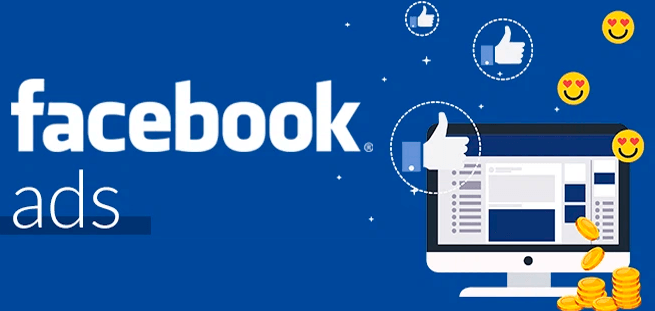

What is Facebook Ads
Overview of Facebook Ads
Facebook Ads is one of the most powerful online advertising platforms, enabling businesses of all sizes to reach a vast and diverse audience. With over 2.8 billion monthly active users as of 2024, Facebook offers advertisers a unique opportunity to connect with potential customers across the globe. The platform’s advertising capabilities are bolstered by its advanced targeting options, robust analytics, and the integration of Instagram, Messenger, and the Facebook Audience Network.
Key Features of Facebook Ads
- Audience Targeting:
- Demographics: Advertisers can target users based on age, gender, location, language, education, job title, and more.
- Interests: Facebook allows targeting based on users’ interests, hobbies, and pages they follow.
- Behavioral Targeting: This includes targeting based on users’ past behavior on Facebook and other sites, such as purchasing behavior, device usage, and travel patterns.
- Custom Audiences: Businesses can upload their customer data (emails, phone numbers) to target specific individuals or create lookalike audiences to reach similar users.
- Retargeting: Advertisers can re-engage users who have previously interacted with their brand, visited their website, or used their app.
- Ad Formats:
- Image Ads: Simple, effective, and commonly used for driving traffic and conversions.
- Video Ads: Great for storytelling, demonstrating products, or creating engaging content.
- Carousel Ads: Allows multiple images or videos within a single ad, ideal for showcasing a range of products.
- Collection Ads: Combines a video or image with a collection of product images, perfect for e-commerce.
- Slideshow Ads: Lightweight videos created from images, text, and sound, offering an alternative to video ads.
- Instant Experience (Canvas Ads): A full-screen, immersive ad format that opens when users click on the ad.
- Lead Ads: Simplifies the process of collecting user information by providing pre-filled forms within Facebook.
- Dynamic Ads: Automatically promotes relevant products to users who have expressed interest, based on their activity.
- Ad Placement:
- Ads can be placed across Facebook’s ecosystem, including:
- Facebook News Feed: Appears as posts in users’ main feeds.
- Instagram Feed: Similar to Facebook News Feed but on Instagram.
- Facebook and Instagram Stories: Full-screen vertical ads that appear between users’ Stories.
- Messenger: Ads appear in the home tab of Facebook Messenger.
- Facebook Marketplace: Appears when users browse Marketplace.
- Audience Network: Extends ad reach to third-party apps and websites.
- Budgeting and Bidding:
- Daily and Lifetime Budgets: Advertisers can set a daily or lifetime budget, ensuring control over ad spend.
- Bidding Options: Facebook offers various bidding strategies, including cost-per-click (CPC), cost-per-impression (CPM), and cost-per-action (CPA). Advertisers can choose to optimize their bids for different objectives like conversions, clicks, or impressions.
- Ad Scheduling: Ads can be scheduled to run at specific times of the day or week, depending on when the target audience is most active.
- Analytics and Reporting:
- Facebook Ads Manager provides detailed analytics, allowing advertisers to track the performance of their ads in real-time.
- Metrics include reach, impressions, clicks, conversions, and return on ad spend (ROAS).
- Facebook Pixel is a crucial tool for tracking conversions, understanding user behavior, and optimizing ads for better performance.
Benefits of Facebook Ads
- Highly Targeted Advertising: The ability to reach specific audiences based on detailed targeting options ensures that ads are shown to the most relevant users.
- Cost-Effective: With the ability to set precise budgets and bids, businesses can control costs and maximize ROI.
- Scalability: Facebook Ads can be scaled to reach a large audience, making it suitable for businesses of all sizes.
- Measurable Results: The platform provides extensive reporting and analytics, allowing advertisers to measure success and adjust strategies accordingly.
- Cross-Platform Integration: Integration with Instagram, Messenger, and the Audience Network expands reach and enhances campaign performance.
Challenges of Facebook Ads
- Ad Fatigue: Users may become less responsive to ads they see repeatedly, requiring fresh creative content.
- Competition: With so many advertisers on Facebook, competition can be fierce, especially in popular niches.
- Constant Changes: Facebook regularly updates its algorithms and ad policies, requiring advertisers to stay informed and adaptable.
Best Practices
- Use Compelling Creatives: High-quality visuals and engaging copy are crucial for capturing attention.
- Test and Optimize: A/B testing different ad creatives, headlines, and targeting options can significantly improve performance.
- Leverage Custom Audiences: Utilize custom and lookalike audiences to target users most likely to convert.
- Monitor Performance Regularly: Keep a close eye on metrics and be ready to adjust your strategy based on the data.
- Align Ads with Business Goals: Ensure that your ad objectives align with your overall marketing goals, whether it’s brand awareness, lead generation, or sales.
Facebook Ads offers a robust platform for digital marketers to connect with a vast audience, drive engagement, and achieve business objectives. However, success requires careful planning, ongoing optimization, and a deep understanding of the platform’s features and best practices.